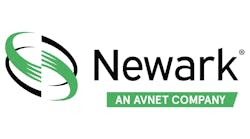The scenario is depressingly familiar. Each make and model of PLC in your plant requires its own PLC programming software, forcing you to track multiple PLC programming packages, pay fees to keep each up to date, and make sure the right software is being for each PLC.
Adding to your software management problem are programmable devices such as drives, analyzers and smart instruments that also need their own programming software. Throw in the programming packages for HMIs and other operator interface devices, and you are left with scores of software programs to master, manage and maintain.
But a solution — if not the hoped-for panacea — may be on the way. What are the benefits of such a solution?
“Universal PLC programming software would result in ease of use after one-time training, lower costs and more reusable code,” says Jeremy Pollard, the president of system integrator Programmable Controller Support Systems. Pollard’s views are particularly germane, as he is the past managing director of PLCopen. As its name suggests, PLCopen’s mission is to promote control programming standardization.
Other advantages are detailed by Jim Christensen, the president of Holobloc, the company that maintains and improves the publicly available, IEC 61499-compliant Function Block Development Kit technology. “The right software would support encapsulation and protection of intellectual property (IP), and make it portable across many software tools and runtime platforms.”
In Christensen’s vision, IP developed once could be used across multiple hardware platforms by multiple vendors.
If the benefits of universal PLC programming software are so compelling, why have we seen so little progress in this area? Pollard hints at the answer. “One drawback of a universal software solution would be the lack of innovation due to reduced vendor revenues that would surely follow from commoditization of vendor hardware platforms.”
Universal PLC programming software could reduce PLCs to a commodity status, like PCs. The only winner would be the company that controlled the software standard, as Microsoft does with PC operating systems and applications.
Vendors fear universal PLC programming software because it could commoditize their hardware, but end users love the idea. Perhaps this is why the IEC61131 standard didn’t accomplish its goals. “IEC61131 was developed by vendors and supported by vendors, but it left users out in the cold. I refer to IEC61131 as a non-standard because it just provided a basis for the building of a programming environment, but did nothing in the way of code-sharing,” comments Pollard.
Vendors were able to co-opt IEC61131, and some are wary of the same danger with respect to the new IEC61499 standard. “IEC61499 is a programming and configuration standard that has a chance to make history if no one tries to modify or bias the standard to favor of their hardware,” says Julien Chouinard, the managing director of ICS Triplex ISaGRAF, recently acquired by Rockwell Automation.
What exactly is this new IEC61499 standard, and what does it hope to accomplish?
“The IEC61499 standard defines how function blocks can be used in distributed industrial processes and in measurement and control systems. IEC61499 goes beyond the IEC61131 standard by offering a model that allows applications to be distributed over multiple platforms, both PLCs and other hardware devices,” explains Chouinard.
Chouinard says that IEC61499 will provide a high-level approach to the design of distributed controls, introduce rigorous relationships among controllers and the concept of objects in the industrial control environment, complement fieldbus protocols by providing a control environment for networked elements, and yield interoperability and configurability of devices in multi-vendor environments.
Chouinard hopes that IEC61499 will become a true open standard because it is not a spin-off of specific vendor technology, meets the expectations of the IEC, is unbiased, does not rely on proprietary technology, and can be implemented in its entirety by any automation vendor. End users and system integrators can help IEC61499 fulfill its promise by forcing their vendors to comply with the new standard.



